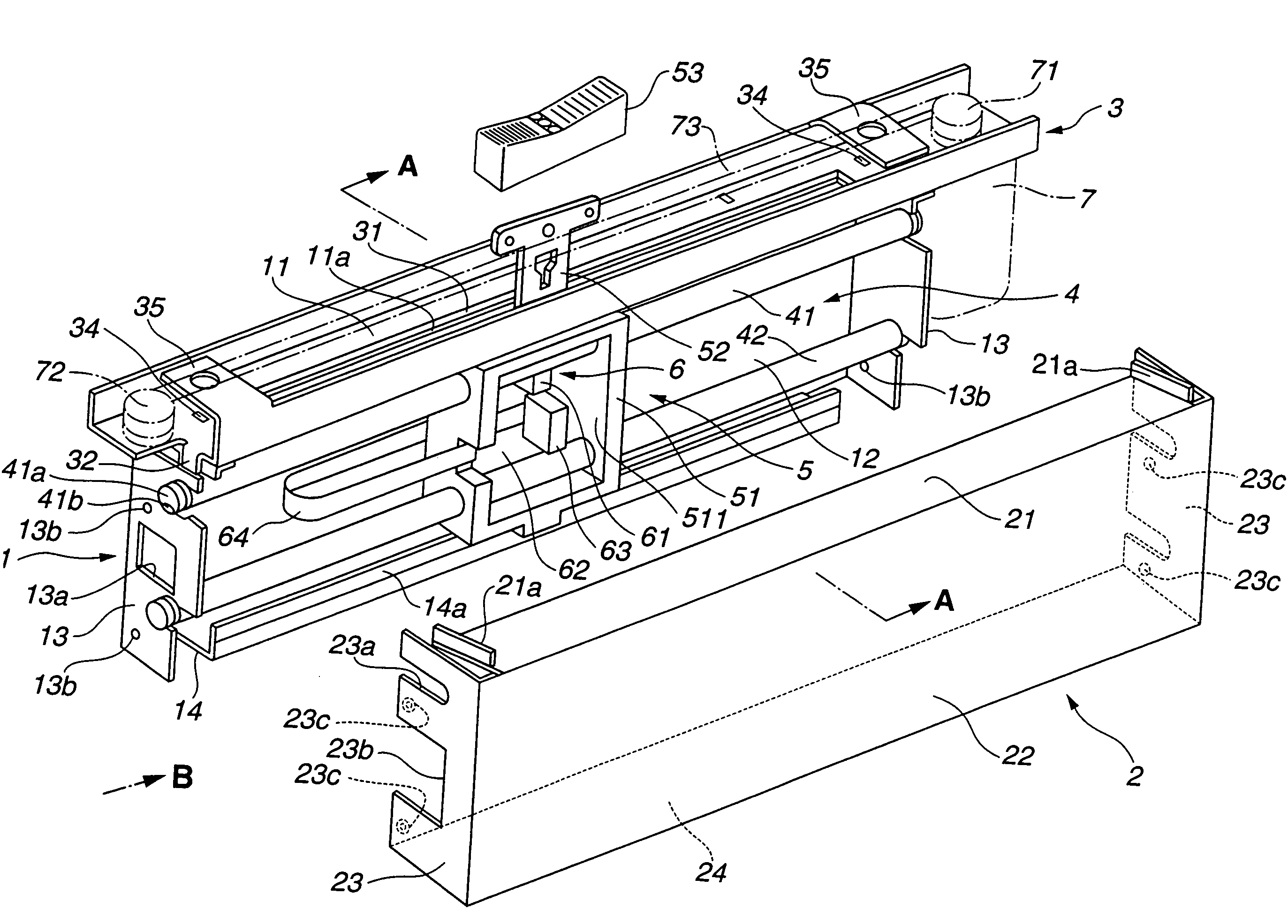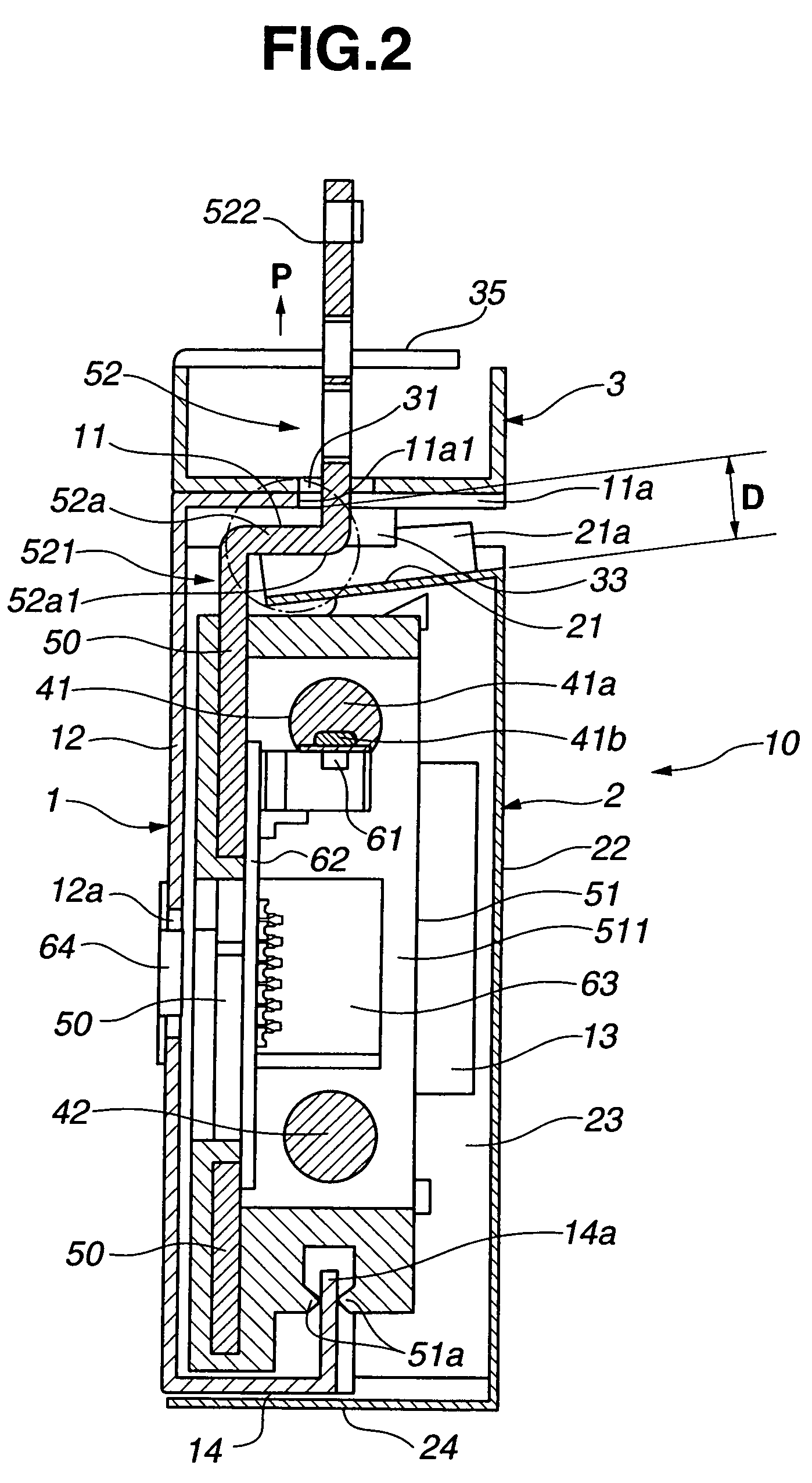Sliding operating device
a technology of operating device and sliding shaft, which is applied in the direction of mechanical actuators, mechanical apparatus, contact mechanisms, etc., can solve the problems of external dust undetected in the case, and achieve the effects of reducing cost, simple construction, and reliable dust prevention
- Summary
- Abstract
- Description
- Claims
- Application Information
AI Technical Summary
Benefits of technology
Problems solved by technology
Method used
Image
Examples
first embodiment
[0025]FIG. 1 is an exploded perspective view showing relevant sections of a sliding volume control device constructed as a sliding operating device of the present invention. FIG. 2 is a view of the sliding volume control device taken along the A-A line of FIG. 1, and FIG. 3 is a view of the sliding volume control device taken in the direction of arrow B. This sliding volume control device includes a frame 1 as a first case half, a cover 2 as a second case half, and a motor mounting member 3. The cover 2 and motor mounting member 3 may be formed by cutting and bending of a metal plate. The frame 1 and cover 2 are formed into a rectangular thin box shape. The motor mounting member 3 is formed into an elongated shape having a channel sectional shape.
[0026]The frame (first case half) 1, which is formed into a substantial box shape having an opening in one side thereof, has a top plate portion 11, case side surface portion 12, case end surface portions (i.e., side plate portions of the c...
second embodiment
[0042]In the cover 2′ of the second embodiment, as seen in FIG. 7, the top of the case end surface portion (i.e., side plate portion of the case half) 23′ is located at generally the same height as the top of the raised portion 21a′ of the top plate portion 21′. Slight gap is formed between the outer positioning piece 32′ and the end surface portion (i.e., side plate portion of the case half) 13 of the frame 1. When the cover 2′ is fitted over the frame 1, the top of the case end surface portion 23′ of the cover 2′ is fitted between the outer positioning piece 32′ and the end surface portion 13. Further, the inner positioning piece 33′ of the motor mounting member 13 is abutted against the outer surface of the raised portion 21a′ of the cover 2′.
[0043]The top plate portion 21′ slants downwardly from the upper end of the case side surface portion 12 of the frame 1 toward the case side surface portion 22′ of the cover 2′. Namely, the top plate portion 21′ in the second embodiment slan...
PUM
 Login to View More
Login to View More Abstract
Description
Claims
Application Information
 Login to View More
Login to View More - R&D
- Intellectual Property
- Life Sciences
- Materials
- Tech Scout
- Unparalleled Data Quality
- Higher Quality Content
- 60% Fewer Hallucinations
Browse by: Latest US Patents, China's latest patents, Technical Efficacy Thesaurus, Application Domain, Technology Topic, Popular Technical Reports.
© 2025 PatSnap. All rights reserved.Legal|Privacy policy|Modern Slavery Act Transparency Statement|Sitemap|About US| Contact US: help@patsnap.com



